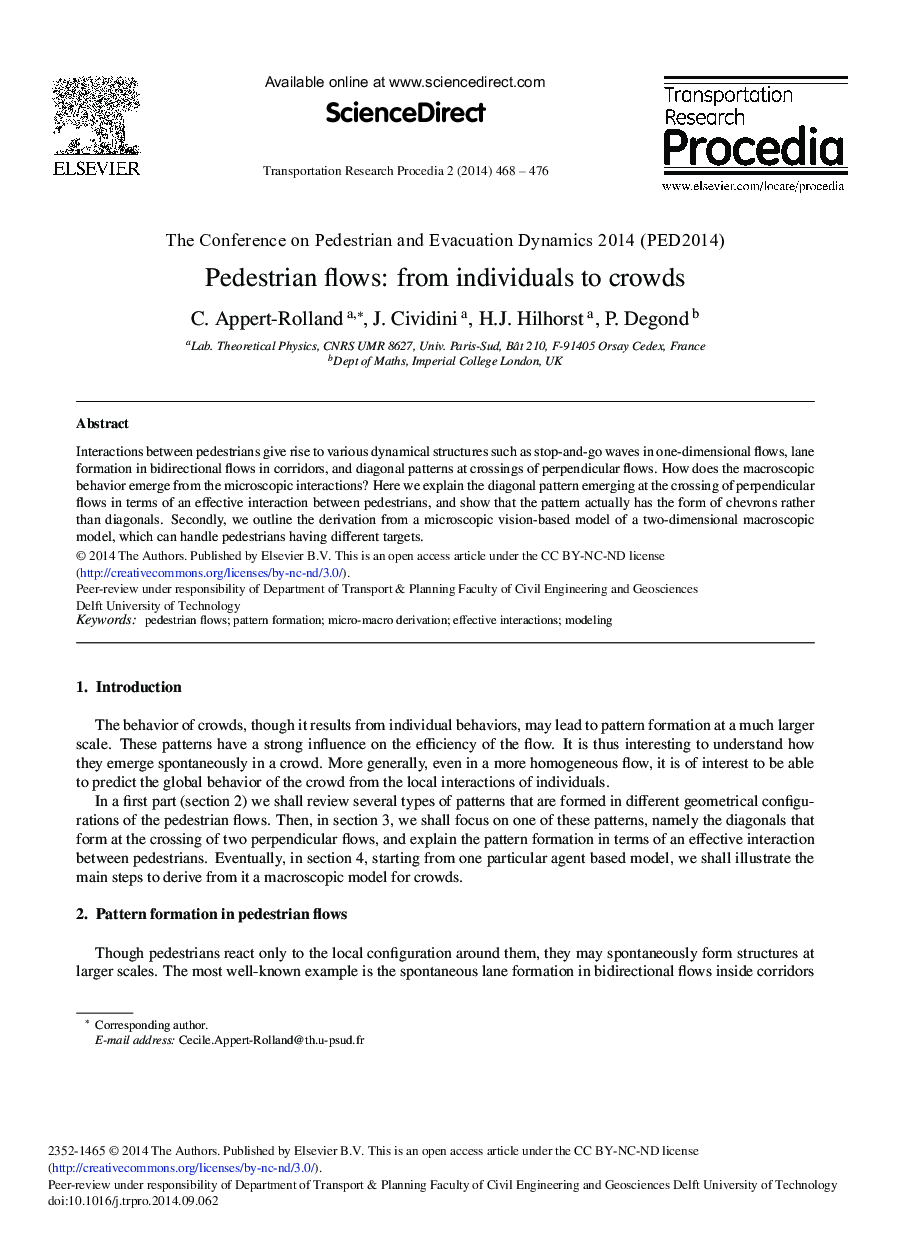| Article ID | Journal | Published Year | Pages | File Type |
|---|---|---|---|---|
| 1106719 | Transportation Research Procedia | 2014 | 9 Pages |
Abstract
Interactions between pedestrians give rise to various dynamical structures such as stop-and-go waves in one-dimensional flows, lane formation in bidirectional flows in corridors, and diagonal patterns at crossings of perpendicular flows. How does the macroscopic behavior emerge from the microscopic interactions? Here we explain the diagonal pattern emerging at the crossing of perpendicular flows in terms of an effective interaction between pedestrians, and show that the pattern actually has the form of chevrons rather than diagonals. Secondly, we outline the derivation from a microscopic vision-based model of a two-dimensional macroscopic model, which can handle pedestrians having different targets.
Related Topics
Social Sciences and Humanities
Social Sciences
Safety Research
